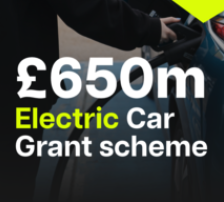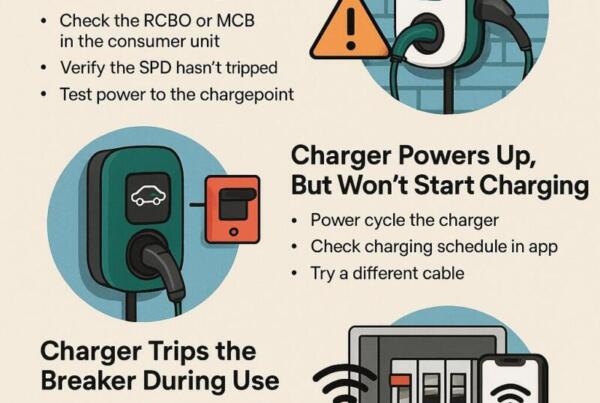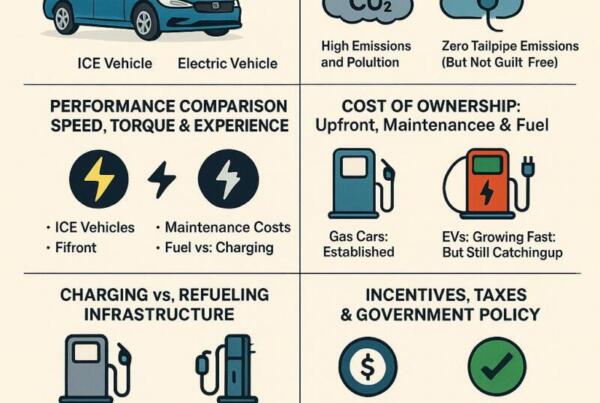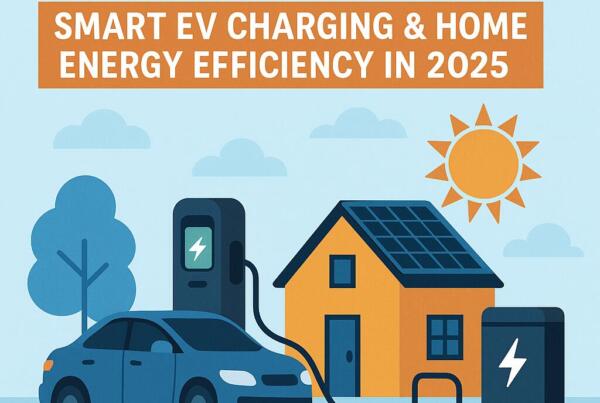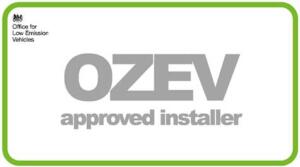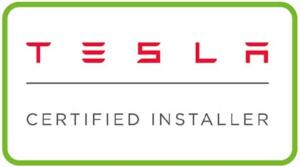⚡ A New Dawn for EV Adoption? Exploring the £3,750 Electric Car Grant
On 14–15 July 2025, the UK government officially relaunched a large-scale Electric Car Grant (ECG), investing £650 million over four years to offer up to £3,750 off new electric vehicles priced under £37,000 (GOV.UK). This blog dives into how the scheme works, why it’s needed, who wins (and who doesn’t), and what this could mean for the future of motoring in Britain.
1. What Is the Electric Car Grant?
- Up to £3,750 discount at point of sale for eligible new EVs priced at or below £37,000 (GOV.UK).
- Two-tiered incentives:
- £3,750 for models with the lowest lifecycle emissions (“Band 1”),
- £1,500 for those with decent but lower sustainability performance (“Band 2”) (The Electric Car Scheme, The Independent, The Guardian).
- Eligibility hinges on manufacturers meeting Science Based Targets (SBTs) and demonstrating low embedded carbon during production (Financial Times).
- The ECG is available from 16 July 2025 until the end of the 2028–29 financial year, though it may close early if funds run out (GOV.UK).
- Brands must apply for eligibility—it’s not automatic. Buyers receive the discount at purchase, but manufacturers apply first (GOV.UK).
2. Why It Was Needed
Several factors prompted the return of the grant:
a) EV Sales Have Slowed
- The UK’s new EV sales in H1 2024 stagnated at around 21.5%, well below the roughly 28% target, and far short of the 80% goal for 2030 (Top Gear, Financial Times).
- Without financial incentives, many private buyers are deterred by high upfront costs.
b) Upfront Cost Barrier Still High
- Average EV price stands at about £49,000 — significantly above the £37,000 threshold (The Guardian, Financial Times).
- Though there are now 33 models under £30,000, this is still not enough to drive mass adoption (The Guardian).
c) Industry Pressure
- Carmakers have urged for support following the withdrawal of a previous grant in 2022.
- Fleet demand has recently fallen nearly 11%, suggesting broader mental adoption issues (Financial Times, The Times).
3. ✅ Who Gains Most?
1. Buyers of Sustainable EVs
Those picking “Band 1” vehicles will receive the full £3,750. Examples are likely to include:
- Renault 5
- Citroen e‑C3
- Skoda Elroq
- Vauxhall Grandland
- MG4
- Peugeot e‑208 (The Independent, EV Powered, The Sun)
Cars with superior environmental credentials and driver lifetime savings will advance to the front of the pack.
2. Mainstream Market Entrants
Used to being niche due to price, mainstream consumers will likely see these EVs become more accessible, especially compared with petrol equivalents.
3. Manufacturers Adhering to Sustainability Standards
To receive full grants, OEMs must rigorously track supply chain emissions, battery sources, and clean power in production. This pushes the industry to go greener—not just electrify.
4. ❌ Who Misses Out?
a) Luxury & Chinese EV Makers
- Brands like Tesla, Audi, and BMW are either above the price cap or don’t meet domestic sustainability rules, excluding them (The Guardian).
- Most Chinese EVs like BYD are also ineligible due to production emissions tied to coal-heavy grids (The Guardian).
b) Used EV Buyers
The ECG applies only to new cars. With used EV prices falling as much as 46% since 2021, financing is becoming more common, but this demographic gets no support (The Times).
c) Drivers Without Off-Street Charging
Particularly affected are disabled drivers and renters—some may not have a driveway or chargers .
- Rural or flat dwelling buyers facing poor charging infrastructure may struggle, leaving the grant less effective in practice (The Guardian).
5. Systemic Considerations
A successful EV rollout isn’t just price-driven:
⚡ Charging Infrastructure
- There are now approximately 82,000 public charge points, but distribution is patchy (The Guardian).
- Government has pledged £63 million to expand charging infrastructure (Financial Times).
- Solutions like cross-pavement charges are being trialed (MoneyWeek).
Home & Workplace Charging
- £25 million is being allocated for low‑cost home charging schemes via local authorities (MoneyWeek).
- Simplified planning rules are aiding charger rollout .
⚖️ Equity in Subsidy
- Supporters argue not everyone benefits equally—critics say it’s “politically misguided folly” to fund higher-income buyers (The Times).
- There are claims the scheme unfairly benefits Motability users despite lack of home charging (The Sun).
Used EV Market Support
- Membership organizations like SMMT note that without used-car incentives, residual values will take a hit, impacting new EV financing (Financial Times).
6. Final Verdict: Is It Any Good?
Strengths
- Targeted Relief to Lower Costs
- £3,750 brings down average new EV cost to ~£45k, bridging the gap toward mainstream affordability (Financial Times).
- Encourages Cleaner Production
- Linking grants to SBTs means companies must reduce embedded carbon—not just sell cars.
- Encourages Manufacturer Participation
- OEMs face pressure to both cut prices and meet sustainability thresholds—pushing supply‑side transformation.
- Scheme Stability
- A multi‑year commitment until 2029 gives certainty to buyers, dealers, and manufacturers (The Sun).
Weaknesses
- Complexity & Delay
- Uncertainty around band assignments, and lag in approvals, means buyers may not see immediate benefits .
- Exclusion of Key Markets
- Excluding used EVs and urban renters limits reach and may aggravate inequality .
- Infrastructure Constraints
- Without fast-charging expansion, such schemes won’t overcome range or availability concerns .
- Potential Market Distortion
- Critics warn it might distort EV pricing and market demand without foundational tech support .
7. Policy Recommendations
To maximize the ECG’s impact, here’s what should accompany it:
- Extend Some Support to Used EV Buyers
- A smaller grant for qualified used EVs (e.g., £1,000) would protect residual values and broaden access.
- Tighten Criteria & Transparency
- Clear, public lists of banded vehicles help consumers plan; DfT should expedite band communication.
- Expand Infrastructure Faster
- Increased funding to £250m+ for charging, especially rapid chargers and cross‑pavement hotspots.
- Targeted Support for Underserved Drivers
- Additional top-up grants for apartment dwellers or Motability customers without home charging capabilities.
- Monitor & Evaluate Outcomes
- Publish quarterly stats on grant uptake, EV sales, charger deployment, and socioeconomic reach.
8. Looking Ahead
With the 2030 petrol/diesel ban looming, the ECG signals a renewed push for electrification. It promises:
- Millions in Consumer Savings – Up to £1,500 per year in running costs.
- Cleaner Supply Chains – Sustainable manufacturing backed by regulation.
- Market Uplift – Averted plateau and renewed EV growth.
However, without better infrastructure and broader inclusion, the ECG risks being a short‑term boost rather than a lasting transformation.
9. Final Thought
In short, yes—we think the new grant is a step in the right direction, but its success will depend on:
- How quickly and transparently vehicles are banded.
- How well this is coupled with charging support and used-market incentives.
- Whether underserved groups gain fair access.
The ECG is a piece in a much larger puzzle. With smart complementary policies, it can help the UK transition from EV curiosity to EV consensus.
Quick Table: ECG Summary at a Glance
| Element | Details |
|---|---|
| Funding | £650 million through 2028–29 |
| Car Price Cap | £37,000 new |
| Grant Value | Up to £3,750 (Band 1), or £1,500 (Band 2) |
| Eligibility | New EVs; OEMs must meet SBTs |
| Live | From 16 July 2025 |
| Excluded | Used EVs, high-price EVs, poorly scored manufacturers, urban drivers w/o chargers |
✅ Final Verdict:
A positive, necessary, and well-targeted return to EV incentives—but its full impact hinges on infrastructure, equity, and market clarity. Let’s hope the ECG sparks not just a short‑lived sales burst, but sustained electric momentum.
Frequently Asked Questions
1. Which specific EV models are eligible for the full £3,750 grant?
As of now, the government hasn’t released an official, up-to-date list of Band 1 and Band 2 vehicles. Manufacturers must apply and prove their emissions and sustainability credentials. This means eligible models will roll out gradually. Likely candidates include the MG4, Citroën e-C3, Renault 5, and Peugeot e-208, but confirmation will come from the DfT in the coming weeks.
2. Will the grant affect leasing or salary sacrifice schemes?
Yes, but indirectly. While the grant itself applies only to new vehicle purchases (not leases), many leasing companies and salary sacrifice providers will likely pass on the discount by lowering monthly payments. This could make schemes like those from Octopus or Tusker even more cost-effective, though buyers should confirm with their provider.

